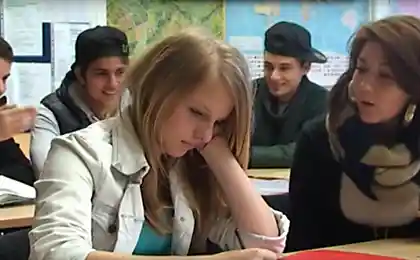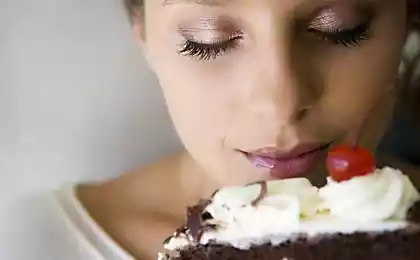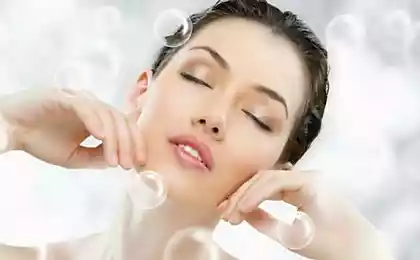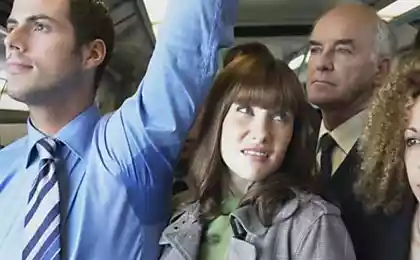472
The smell of Apple
Substances and aroma substances jelly Apple is a year or not Apple? Interested persons are discussing is not less lively than the ruble. If the apples will not grow, it is, of course, is bad. And if you grow... the Citizen not having your site, but will be happy when I suddenly call buddy or rhodic and kindly ask him if he wanted apples. Naive urban dwellers thought it would be a good idea to eat the Apple in the evening to the series and to confirm that, Yes, necessary. What was the ambush, he will know only when the man pulled out of trunk second huge box full of apples.
Forty four million two hundred forty nine thousand seven hundred twenty two
To eat as much no show is impossible. Long they won't lie, there's already spoiled. Throw hand does not rise, especially with winter coming. Will have to jam. Is simple enough: sliced, covered with sugar, heated, while stirring, wait until cooked, laid out on the Bank. But it is interesting that the jam when cold, is like jelly. Without any special additives, just apples and sugar. Why?
Sweet Apple do fructose, glucose and sucrose (with a predominance of fructose), acid — malic and citric acid. In unripe fruit acids is approximately twice more than in ripe, and in its high level of phenolic compounds with a sharp taste. More than once from this Apple, few bites, and nacusa soon becomes rusty brown. The reason is not "oxidized iron" which is often spoken and even write: it is oxygen in the air penetrates into the damaged tissue of the Apple, and the enzymes oxidize the colorless phenolic compounds to quinones, which react with amino acids and proteins, forming brown products.
But now we are interested in Apple pectin — a polysaccharide consisting mainly of residues of d-galacturonic acid. It is similar to the monosaccharide galactose, with only one carboxyl group of which is called acid. To many carboxyl groups Apple pectin still attached methyl group CH3. In fact, the pectin is in any thick, but not lignified plant tissue: they connect the cells to each other, and when ripe the fruit of their destroys enzymes, making the flesh mealy. But in apples it to 1-1,5% — far more than in cherries or strawberries. From Apple pomace and citrus pectin is extracted in industrial quantities — for confectionery, medical and other purposes.
Thirty two million two hundred ninety eight thousand five hundred thirty six
The heated solution of pectins (e.g., gurgling on the stove Apple jam) liquid, but when cooled between pectin molecules formed hydrogen bonds. They are woven into a network, which turns the liquid into gel: water is retained in this three-dimensional sieve, and get something not solid, but not liquid. Pectin-rich methyl groups, well heliroute with high levels of sugar (Apple juice by itself, the jelly will not turn). Sugar binds water molecules and forces the molecules of pectin to interact with each other. Facilitates the process and acidification — not just packets of pectin for jam add citric acid. Hydrogen bonds arise between IT and carboxypropyl; other contributors are hydrophobic interactions between metelli neighboring chains.
Pectin is not absorbed by the body, but slowing down the absorption of glucose and cholesterol. In the last decades a lot of talk about their ability to bind and excrete heavy metals and their anti-inflammatory properties. Perhaps it is pectin, not only vitamins and fructose make apples so useful.
And the smell when you enter the room where a box of apples, — that speaks about this science? The smell of apples is difficult. In the first decades of the twentieth century have been identified dozens of components, and with the advent of modern methods for the analysis of hundreds. Ripe apples emit into the air esters, alcohols, aldehydes, ketones, carboxylic acids... Experts believe 20-40 main components, with the smells of different varieties, of course, vary. Esters products of reaction of alcohols with carboxylic acids is responsible for many fruity flavors, and when chemists realized this, the production of fruit essences beginning to flourish. The figure shows some components of the odour of natural apples.
Smell. In the twenty-first century came the turn of the genes that distinguish sweet apples from smelling poorly. ГенMdAAT1, which encodes a key enzyme in the biosynthesis of esters alcoholallegra, sometimes called "gene of Apple flavor"; the differences in its nucleotide sequence directly affect the smell. By the way, Antonovka, which is keenly interested in our foreign ablatively because of its resistance to scab, attributed to aromatic varieties.
Hexidecimal according to experts, the smell of Apple peel. Beta damascenone little fresh Apple juice, but they smell roasted and boiled apples.
Now a bottle of essences with Apple spirit can be ordered online. And during the Second world war, American women baked fake Apple pie-braid, where the role of Apple slices was performed crackers, soaked in a syrup with lemon juice and zest, ground cinnamon and wine stone. In our climate apples will always be more than lemons, but to prepare them for winter does not hurt. We respect those heroic sorts who will delegat until the spring, but Antonivka white filling and much tastier.
Forty five million six hundred seventy two thousand seven hundred seventy nine
Apples baked in syrup
Peel the apples (if you like the rind, you can leave her), cut into quarters, remove the core.
For the syrup 3 kg of peeled apples take 0.5 kg of sugar, ground cloves and cinnamon to taste, stir, pour 0.5 liters of boiling water and dissolve.
Lay the apples on a baking sheet in a single layer, cover with syrup.
Put in oven at 180 °C for 10 minutes, then reduce oven temperature to 120-130 °C and leave for 1.5–3 hours depending on how hard the apples.
Put in sterilized jars, pour the juice (better to boil).
Close the lids. published
P. S. And remember, only by changing their consumption — together we change the world! ©
Join us in Facebook and in Vkontakte, and we're Classmates
Source: kot.sh/statya/251/zapah-yabloka
Forty four million two hundred forty nine thousand seven hundred twenty two
To eat as much no show is impossible. Long they won't lie, there's already spoiled. Throw hand does not rise, especially with winter coming. Will have to jam. Is simple enough: sliced, covered with sugar, heated, while stirring, wait until cooked, laid out on the Bank. But it is interesting that the jam when cold, is like jelly. Without any special additives, just apples and sugar. Why?
Sweet Apple do fructose, glucose and sucrose (with a predominance of fructose), acid — malic and citric acid. In unripe fruit acids is approximately twice more than in ripe, and in its high level of phenolic compounds with a sharp taste. More than once from this Apple, few bites, and nacusa soon becomes rusty brown. The reason is not "oxidized iron" which is often spoken and even write: it is oxygen in the air penetrates into the damaged tissue of the Apple, and the enzymes oxidize the colorless phenolic compounds to quinones, which react with amino acids and proteins, forming brown products.
But now we are interested in Apple pectin — a polysaccharide consisting mainly of residues of d-galacturonic acid. It is similar to the monosaccharide galactose, with only one carboxyl group of which is called acid. To many carboxyl groups Apple pectin still attached methyl group CH3. In fact, the pectin is in any thick, but not lignified plant tissue: they connect the cells to each other, and when ripe the fruit of their destroys enzymes, making the flesh mealy. But in apples it to 1-1,5% — far more than in cherries or strawberries. From Apple pomace and citrus pectin is extracted in industrial quantities — for confectionery, medical and other purposes.
Thirty two million two hundred ninety eight thousand five hundred thirty six
The heated solution of pectins (e.g., gurgling on the stove Apple jam) liquid, but when cooled between pectin molecules formed hydrogen bonds. They are woven into a network, which turns the liquid into gel: water is retained in this three-dimensional sieve, and get something not solid, but not liquid. Pectin-rich methyl groups, well heliroute with high levels of sugar (Apple juice by itself, the jelly will not turn). Sugar binds water molecules and forces the molecules of pectin to interact with each other. Facilitates the process and acidification — not just packets of pectin for jam add citric acid. Hydrogen bonds arise between IT and carboxypropyl; other contributors are hydrophobic interactions between metelli neighboring chains.
Pectin is not absorbed by the body, but slowing down the absorption of glucose and cholesterol. In the last decades a lot of talk about their ability to bind and excrete heavy metals and their anti-inflammatory properties. Perhaps it is pectin, not only vitamins and fructose make apples so useful.
And the smell when you enter the room where a box of apples, — that speaks about this science? The smell of apples is difficult. In the first decades of the twentieth century have been identified dozens of components, and with the advent of modern methods for the analysis of hundreds. Ripe apples emit into the air esters, alcohols, aldehydes, ketones, carboxylic acids... Experts believe 20-40 main components, with the smells of different varieties, of course, vary. Esters products of reaction of alcohols with carboxylic acids is responsible for many fruity flavors, and when chemists realized this, the production of fruit essences beginning to flourish. The figure shows some components of the odour of natural apples.
Smell. In the twenty-first century came the turn of the genes that distinguish sweet apples from smelling poorly. ГенMdAAT1, which encodes a key enzyme in the biosynthesis of esters alcoholallegra, sometimes called "gene of Apple flavor"; the differences in its nucleotide sequence directly affect the smell. By the way, Antonovka, which is keenly interested in our foreign ablatively because of its resistance to scab, attributed to aromatic varieties.
Hexidecimal according to experts, the smell of Apple peel. Beta damascenone little fresh Apple juice, but they smell roasted and boiled apples.
Now a bottle of essences with Apple spirit can be ordered online. And during the Second world war, American women baked fake Apple pie-braid, where the role of Apple slices was performed crackers, soaked in a syrup with lemon juice and zest, ground cinnamon and wine stone. In our climate apples will always be more than lemons, but to prepare them for winter does not hurt. We respect those heroic sorts who will delegat until the spring, but Antonivka white filling and much tastier.
Forty five million six hundred seventy two thousand seven hundred seventy nine
Apples baked in syrup
Peel the apples (if you like the rind, you can leave her), cut into quarters, remove the core.
For the syrup 3 kg of peeled apples take 0.5 kg of sugar, ground cloves and cinnamon to taste, stir, pour 0.5 liters of boiling water and dissolve.
Lay the apples on a baking sheet in a single layer, cover with syrup.
Put in oven at 180 °C for 10 minutes, then reduce oven temperature to 120-130 °C and leave for 1.5–3 hours depending on how hard the apples.
Put in sterilized jars, pour the juice (better to boil).
Close the lids. published
P. S. And remember, only by changing their consumption — together we change the world! ©
Join us in Facebook and in Vkontakte, and we're Classmates
Source: kot.sh/statya/251/zapah-yabloka





















